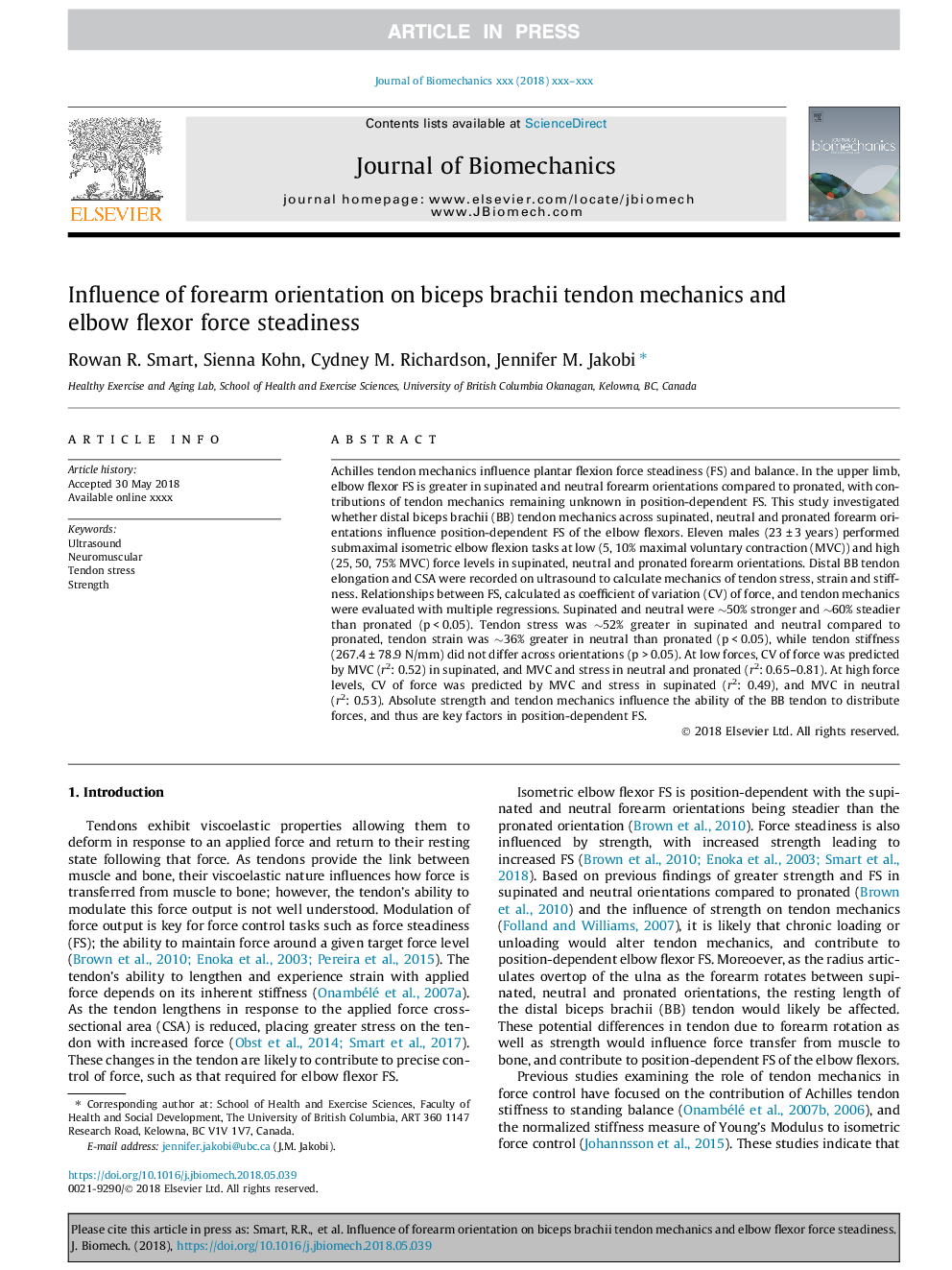| کد مقاله | کد نشریه | سال انتشار | مقاله انگلیسی | نسخه تمام متن |
|---|---|---|---|---|
| 7235758 | 1471088 | 2018 | 7 صفحه PDF | دانلود رایگان |
عنوان انگلیسی مقاله ISI
Influence of forearm orientation on biceps brachii tendon mechanics and elbow flexor force steadiness
ترجمه فارسی عنوان
تاثیر جهت گیری ساعد در عضله دوسر بازو مکانیک تاندون و ثبات آرنج نیروی فلکسور
دانلود مقاله + سفارش ترجمه
دانلود مقاله ISI انگلیسی
رایگان برای ایرانیان
کلمات کلیدی
سونوگرافی، عصبی عضلانی استرس تنت، استحکام،
موضوعات مرتبط
مهندسی و علوم پایه
سایر رشته های مهندسی
مهندسی پزشکی
چکیده انگلیسی
Achilles tendon mechanics influence plantar flexion force steadiness (FS) and balance. In the upper limb, elbow flexor FS is greater in supinated and neutral forearm orientations compared to pronated, with contributions of tendon mechanics remaining unknown in position-dependent FS. This study investigated whether distal biceps brachii (BB) tendon mechanics across supinated, neutral and pronated forearm orientations influence position-dependent FS of the elbow flexors. Eleven males (23â¯Â±â¯3â¯years) performed submaximal isometric elbow flexion tasks at low (5, 10% maximal voluntary contraction (MVC)) and high (25, 50, 75% MVC) force levels in supinated, neutral and pronated forearm orientations. Distal BB tendon elongation and CSA were recorded on ultrasound to calculate mechanics of tendon stress, strain and stiffness. Relationships between FS, calculated as coefficient of variation (CV) of force, and tendon mechanics were evaluated with multiple regressions. Supinated and neutral were â¼50% stronger and â¼60% steadier than pronated (pâ¯<â¯0.05). Tendon stress was â¼52% greater in supinated and neutral compared to pronated, tendon strain was â¼36% greater in neutral than pronated (pâ¯<â¯0.05), while tendon stiffness (267.4â¯Â±â¯78.9â¯N/mm) did not differ across orientations (pâ¯>â¯0.05). At low forces, CV of force was predicted by MVC (r2: 0.52) in supinated, and MVC and stress in neutral and pronated (r2: 0.65-0.81). At high force levels, CV of force was predicted by MVC and stress in supinated (r2: 0.49), and MVC in neutral (r2: 0.53). Absolute strength and tendon mechanics influence the ability of the BB tendon to distribute forces, and thus are key factors in position-dependent FS.
ناشر
Database: Elsevier - ScienceDirect (ساینس دایرکت)
Journal: Journal of Biomechanics - Volume 76, 25 July 2018, Pages 129-135
Journal: Journal of Biomechanics - Volume 76, 25 July 2018, Pages 129-135
نویسندگان
Rowan R. Smart, Sienna Kohn, Cydney M. Richardson, Jennifer M. Jakobi,
